The Cultural Significance of Soccer Balls Worldwide: Beyond Borders and Cultures

Footballers from around the world, including in Chile (Cesar Cortes), Turkey (Mesut Ozil) and Qatar (Santi Cazorla), showed gestures of solidarity after recent Israeli aggression against Palestinians (Twitter)
Table of Contents
Toggle
The Cultural Significance of Soccer Balls Worldwide: The Universal Language
Soccer, or football as it is known in many parts of the world, is more than just a game. It is a global cultural phenomenon that attracts millions of fans across continents and barriers. Soccer has become an intrinsic part of our collective identity, due to its rich history, devoted fan base, and significant impact on society.
But what makes soccer so special? What is the role of the soccer ball in this sport and culture? How has the soccer ball evolved over time, and what does it represent for different people and communities?
In this blog post, we will explore these questions and more, as we examine the cultural significance of soccer balls worldwide. We will look at the origins and evolution of the soccer ball, its economic and social impact, its symbolic meaning, and its global reach.
The Origins and Evolution of the Soccer Ball
The history of the soccer ball dates back to ancient times, when people used various objects, such as animal skulls, inflated pig bladders, or hog heads, to kick around for fun or ritual purposes. Different civilizations, such as the Greeks, Romans, Egyptians, Chinese, and Aztecs, had their own versions of the game, with varying rules and equipment.
The modern soccer ball, as we know it today, emerged in the mid-1800s, when American chemist and engineer Charles Goodyear patented vulcanized rubber and created the first rubber soccer ball. This invention revolutionized the sport, as it provided a more durable and consistent ball that could bounce and roll better.
Since then, the soccer ball has undergone many changes and improvements, especially in the 20th and 21st centuries, with the introduction of synthetic materials, such as leather, PVC, or polyurethane, and the development of new designs, such as the iconic black-and-white pentagonal pattern of the Telstar ball, used in the 1970 World Cup.
The evolution of the soccer ball has been influenced by factors such as technical innovations, scientific research, aesthetic trends, and marketing strategies. The World Cup, the most prestigious and popular soccer tournament, has been a major driving force for the advancement of soccer ball technology and design, as each edition features a new and unique ball that reflects the host country’s culture and identity.
Some of the most memorable and controversial World Cup balls include:
 |
The Telstar (1970): The first ball to have a black-and-white pattern, which made it more visible on TV and became a symbol of the sport. |
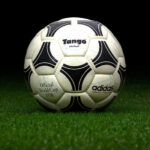 |
The Tango (1978-1998): A ball with 12 identical panels that formed a pattern of triads, resembling the Argentine tango dance. |
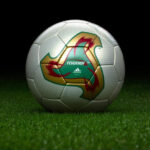 |
The Fevernova (2002): A ball with a bright orange and yellow color scheme and a geometric design, inspired by Asian culture and technology. |
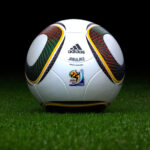 |
The Jabulani (2010): A ball with eight thermally bonded panels and a textured surface, designed to improve aerodynamics and accuracy, but criticized for being too unpredictable and hard to control. |
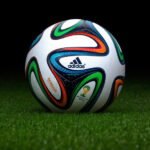 |
The Brazuca (2014): A ball with six polyurethane panels that formed a swirling pattern of stars, representing the Brazilian flag and the vibrant spirit of the country. |
 |
Telstar 18 (2018): The Telstar 18 was a modern homage to the original Telstar, with a similar black-and-white pattern and a chip that provided data on the ball’s speed, trajectory, and spin. It was designed by Adidas and was used in the 2018 World Cup in Russia. The Telstar 18 was made of six panels of polyurethane and had a weight of 420-430 grams. |
 | Al Rihla (2022): The Al Rihla is the latest in the line of FIFA World Cup balls, and it is designed to be the most accurate and responsive ball ever used in the tournament. It has a unique speed shell with a dimpled texture that is designed to improve aerodynamics and grip. The Al Rihla is also the first World Cup ball to be made with water-based inks and glues, making it more sustainable. It was designed by Adidas and was used in the 2022 World Cup in Qatar. The Al Rihla was made of six panels of polyurethane and weighted 420-430 grams. |
These are just a few of the many memorable World Cup balls. Each ball has its own unique story and has played a role in making the World Cup the most popular sporting event in the world.
The Economic and Social Impact of the Soccer Ball
Soccer is not only a source of entertainment and passion, but also a powerful economic and social force that generates billions of dollars in revenue and affects millions of lives worldwide. The soccer ball, as the essential element of the sport, plays a significant role in this impact.
The soccer ball supports various industries, such as manufacturing, broadcasting, advertising, tourism, and merchandising, creating jobs and stimulating local economies. According to a report by FIFA, the global governing body of soccer, the total production of soccer balls in 2016 was estimated at 40 million units, with a market value of $1.5 billion. The main producers of soccer balls are China, Pakistan, India, and Thailand, which account for 90% of the global supply.
The soccer ball also has a profound social impact, as it promotes physical activity, teamwork, and values, such as discipline, dedication, and fair play. Soccer teams and organizations often engage in community outreach programs, using sport and the ball to foster social change. For example, the One World Futbol Project is a non-profit initiative that distributes durable soccer balls to disadvantaged children and communities in over 180 countries, with the aim of improving their health, education, and well-being.
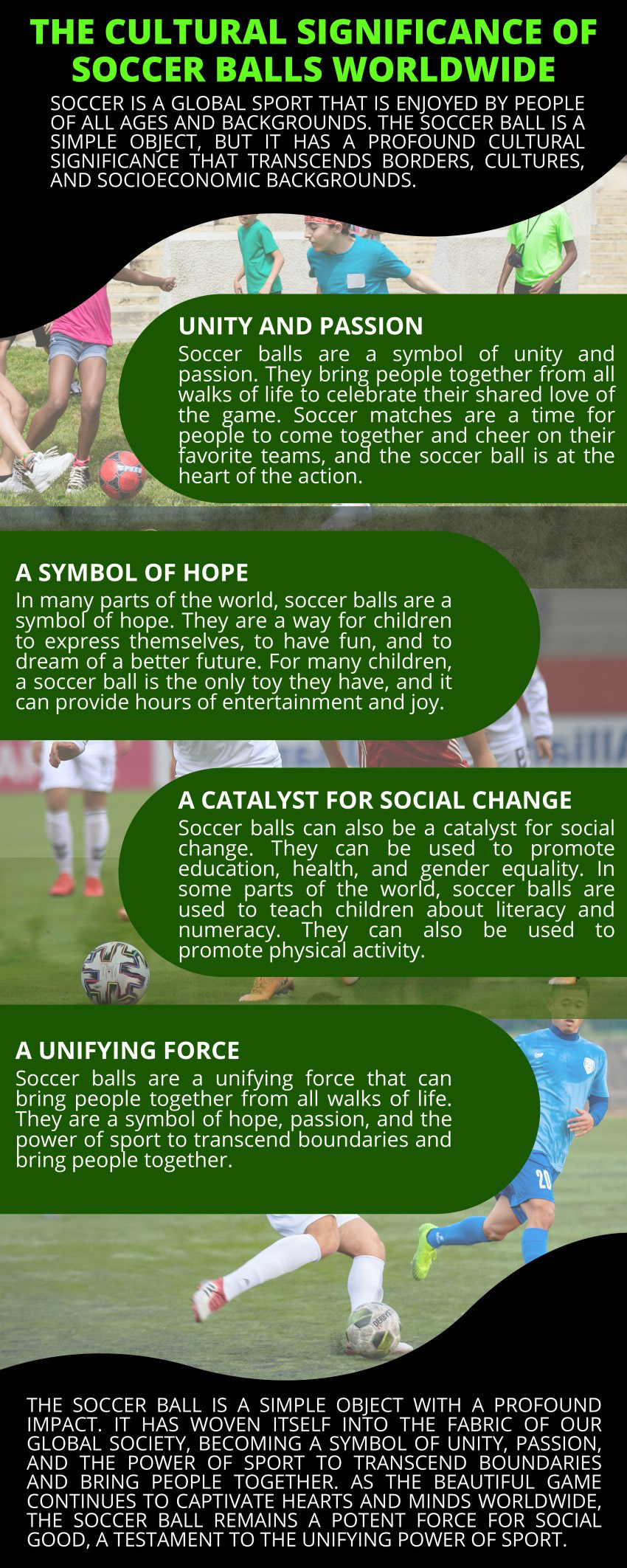
The soccer ball can also be a symbol of hope, resilience, and creativity, especially for people who face poverty, violence, or oppression. In many parts of the world, where access to proper soccer balls is limited or impossible, people improvise and make their own balls out of materials, such as plastic bags, rags, or rubber bands. These homemade balls demonstrate the ingenuity and resourcefulness of soccer lovers, who overcome the challenges and hardships of their environment to enjoy the game.
The Role of Soccer Balls in Social Development:
Soccer balls are not just toys for recreation; they are powerful tools for social development. They can promote education, health, and gender equality, particularly in underprivileged communities.
Education: Soccer balls can be used to teach literacy and numeracy skills. In areas with limited access to formal education, soccer programs can provide a fun and engaging way for children to learn.
Health: Soccer promotes physical activity and encourages healthy lifestyles. In communities with limited access to healthcare, soccer programs can play a role in promoting preventive healthcare.
Gender Equality: Soccer can challenge gender stereotypes and empower women and girls. Girls’ soccer programs can provide opportunities for leadership development, self-esteem, and social inclusion.
The Symbolic Meaning of the Soccer Ball
The soccer ball is not only a physical object, but also a cultural artifact that carries various meanings and associations for different people and groups. The soccer ball can represent identity, belonging, pride, and heritage, as well as conflict, rivalry, and politics.
For many fans and players, the soccer ball is part of their identity, as they support a specific team, club, or nation, and express their loyalty and affiliation through the colors, logos, and symbols of the ball. The soccer ball can also be a source of pride and belonging, as it connects people with their roots and traditions, and showcases their unique cultural features and values.
For example, the Brazuca ball, used in the 2014 World Cup in Brazil, was designed to reflect the diversity and dynamism of the Brazilian culture and people, with its vibrant colors and patterns. The ball was also named by the public, through an online vote, with the word “Brazuca” meaning “Brazilian” or “the Brazilian way of life”.
However, the soccer ball can also be a cause of conflict and rivalry, as it sparks intense emotions and reactions among fans and players, who may clash over the outcome of a game, the performance of a team, or the behavior of a referee. The soccer ball can also be a tool of politics and propaganda, as it can be used to convey messages, influence opinions, or manipulate agendas.
For instance, the Telstar ball, used in the 1970 World Cup in Mexico, was named after a communication satellite that was launched by the United States in 1962, as part of the Cold War space race. The ball was seen as a symbol of American technological superiority and dominance, and a way of promoting its interests and values around the world.
The Global Reach of the Soccer Ball
Soccer is the most popular and universal sport in the world, with an estimated 3.5 billion fans and 265 million players, according to FIFA. The soccer ball, as the core element of the game, has a global reach and appeal, transcending borders, cultures, and backgrounds, and uniting people through a shared love for the sport.
The soccer ball can be found in every corner of the planet, from the streets of Rio de Janeiro, to the fields of rural Africa, to the stadiums of Europe, to the beaches of Australia. The soccer ball can be played by anyone, anywhere, anytime, regardless of age, gender, race, religion, or social status. The soccer ball can also be a bridge of communication and understanding, as it enables people to interact and connect with others who may speak different languages, have different beliefs, or come from different walks of life.
The soccer ball can also be a catalyst for change and development, as it can inspire and empower people to pursue their dreams, overcome their challenges, and make a difference in their communities and the world. Many soccer stars and legends, such as Pele, Maradona, Messi, or Ronaldo, have used the soccer ball as a means of achieving success and fame, as well as giving back and supporting various causes and initiatives.
The soccer ball can also be a source of joy and happiness, as it can bring fun and excitement to people’s lives, and create memorable and meaningful experiences and moments. Whether it is scoring a goal, winning a trophy, watching a game, or playing with friends, the soccer ball can make people smile, laugh, and celebrate.
The Future: Innovations and Sustainability
1. Technological Advancements
Modern soccer balls undergo rigorous design and testing, integrating cutting-edge technology to enhance performance and durability while maintaining tradition.
2. Sustainable Practices
The soccer industry is moving towards sustainability. Brands are exploring eco-friendly materials and production methods to minimize environmental impact.
The Soccer Ball: A Global Symbol of Unity and Passion
The soccer ball is more than just a ball; it is a cultural phenomenon with a profound impact on the world. It carries a rich history, a powerful economic and social influence, and represents a diverse range of symbolic meanings, all while reaching across the globe. The soccer ball reflects our society and culture, serving as a force for change, development, and a symbol of both identity and diversity. It acts as a bridge of unity and harmony, igniting passion, emotion, joy, and happiness across communities.
ASI Soccer, a sports ball manufacturing company from Sialkot, Pakistan, has been producing high-quality soccer balls since 2006. By actively contributing to the progress of the soccer game worldwide, ASI Soccer plays a crucial role in ensuring that the world’s ball continues to inspire and unite people across the globe.
- Facebook
- Twitter
- Linkedin
- Whatsapp





